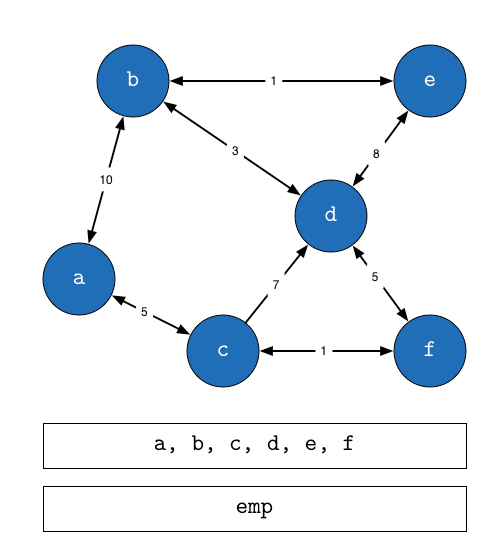Dijkstra's Shortest Path Algorithm
Algorithm
- Note the distances from a current (initial) node to all neighbouring nodes.
- Mark the current node as visited and move to the next node with the smallest distance and set it as the current node.
- If the destination node is marked visited, stop.
- Otherwise repeat at 1.
Notes
- Dijkstra's shortest path algorithm can be used for full traversal (illustrated in the animation) where all the nodes are visited in order to determine all the distances between node
 and node
and node  . However, one can observe in the illustration that when nodes
. However, one can observe in the illustration that when nodes  ,
,  and
and  are visited, the choice is given between following a path with weight
are visited, the choice is given between following a path with weight  to
to  , a path of weight
, a path of weight  to
to  and a path of weight
and a path of weight  to
to  . In the illustration we chose a full traversal, that is, we visit
. In the illustration we chose a full traversal, that is, we visit  , even though we could have directly selected the shortest path with weight
, even though we could have directly selected the shortest path with weight  from
from  to
to  .
. - One invariant for the full-traversal variant of Dijkstra is that there is a minimal path from a starting node to a destination node if and only if the queue of unvisited nodes is empty at the end.
Performance
- Worst case:
 where
where  is the number of edges and
is the number of edges and  is the number of vertices.
is the number of vertices.
fuss/algorithms/shortest_path/dijkstra.txt · Last modified: by 127.0.0.1
For the contact, copyright, license, warranty and privacy terms for the usage of this website please see the contact, license, privacy, copyright.




